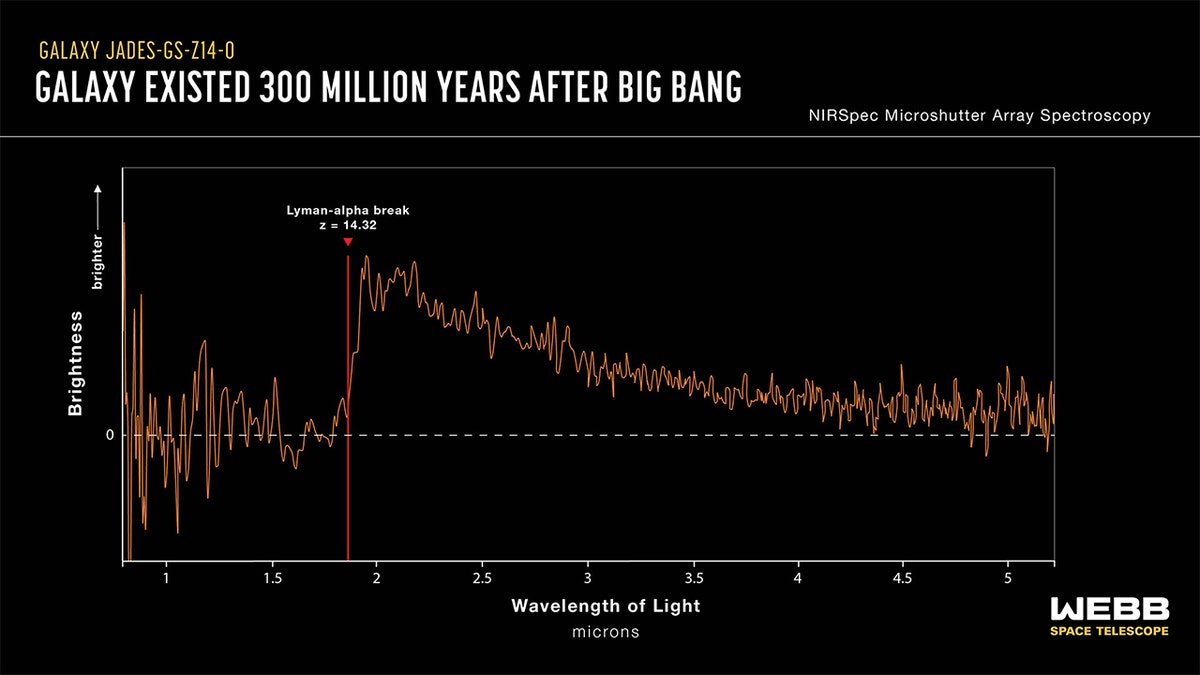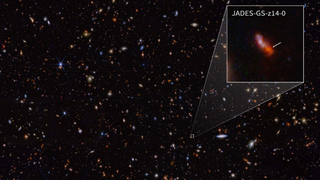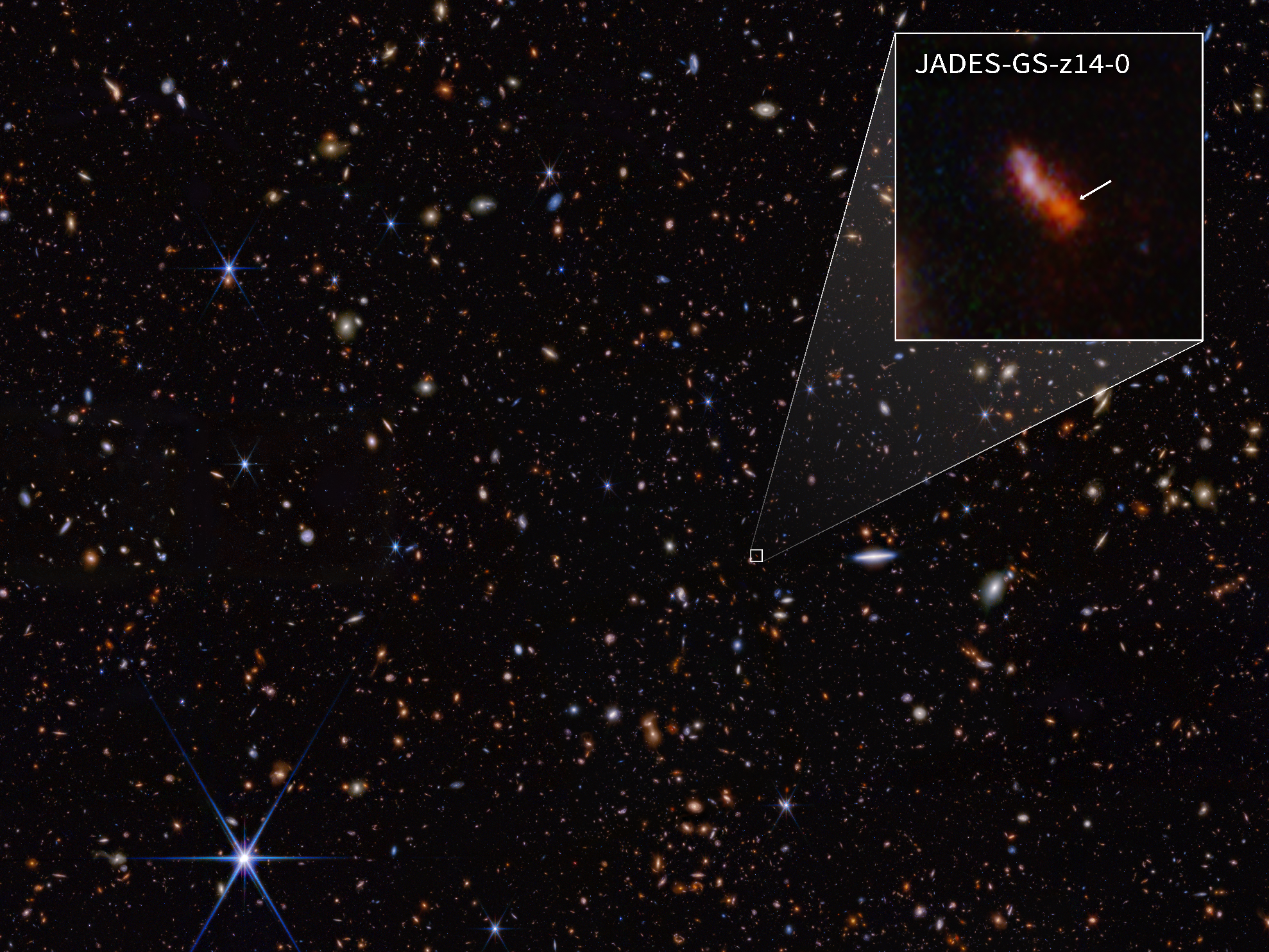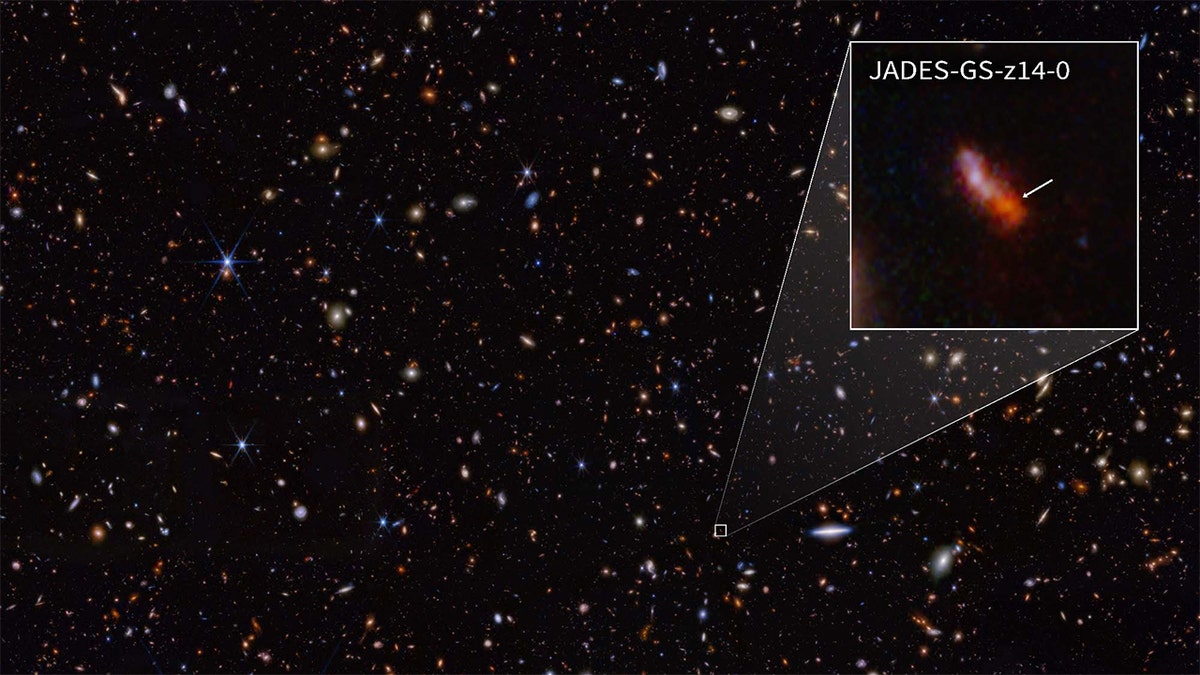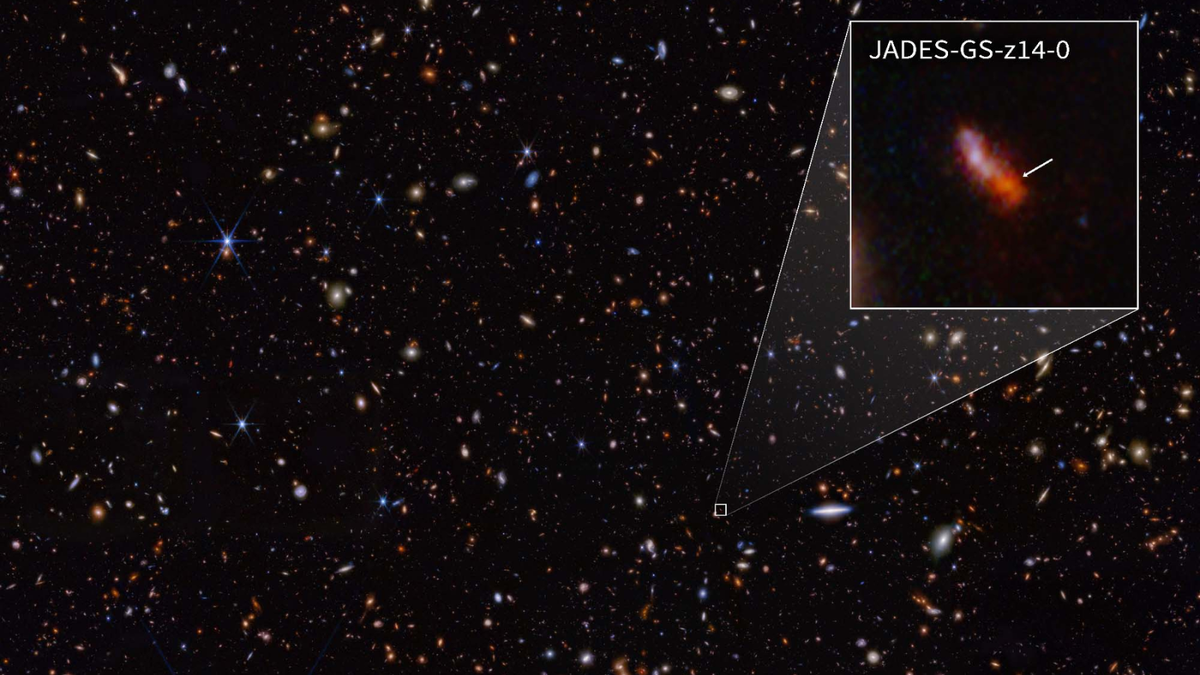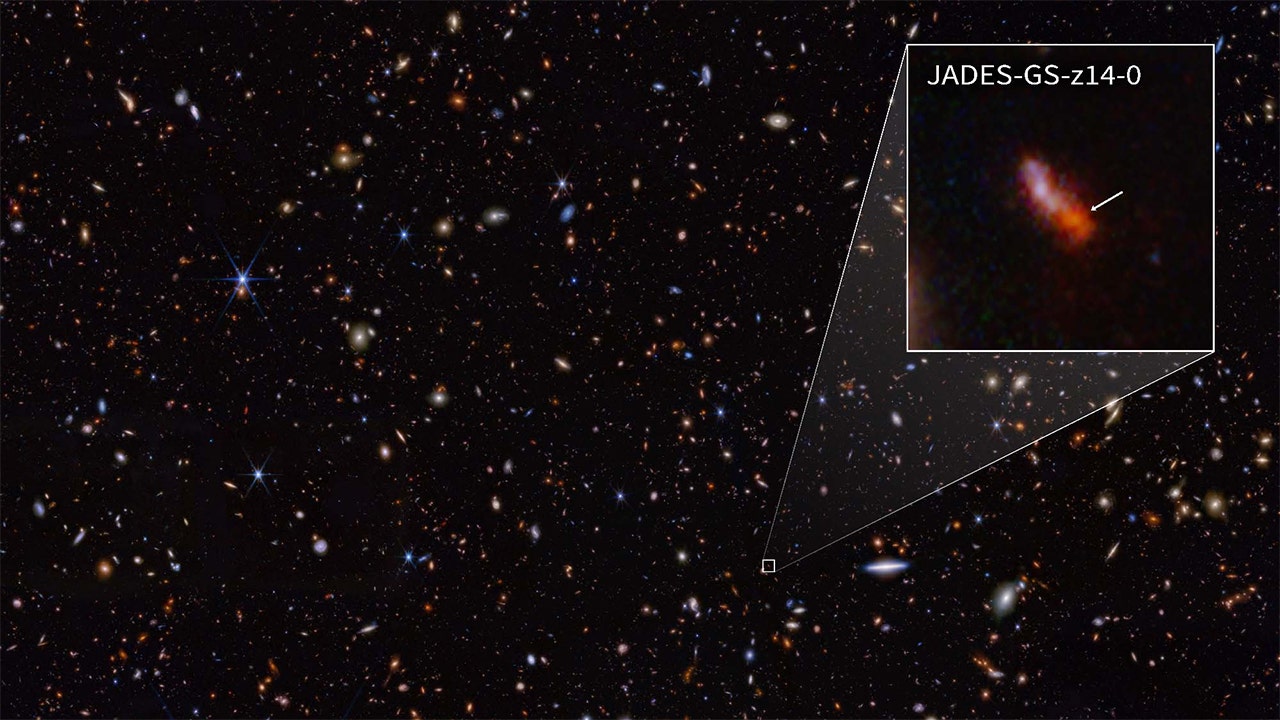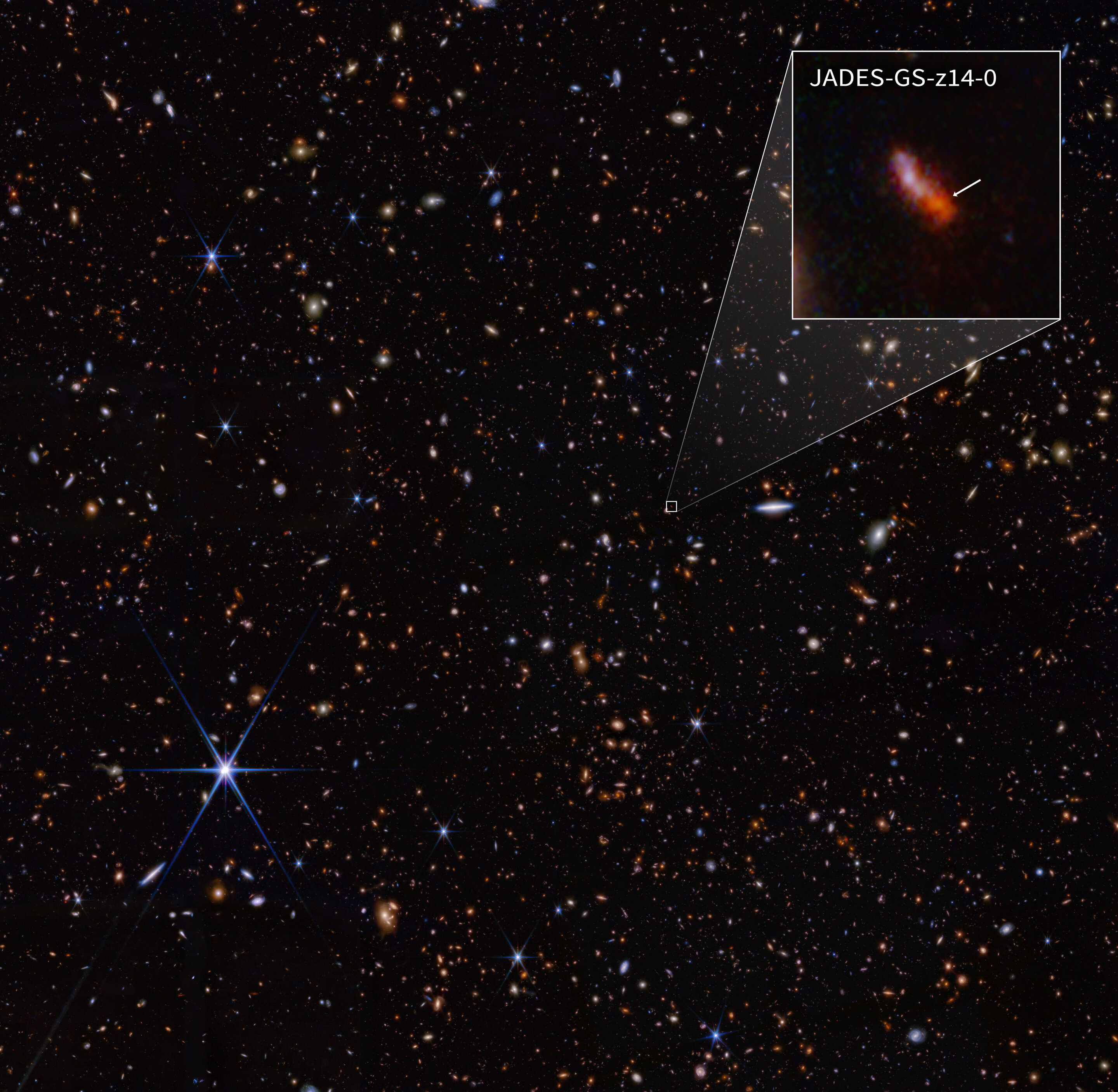
In a groundbreaking discovery, astronomers have identified the most distant known galaxy using NASA's James Webb Space Telescope (JWST). The galaxy, named JADES-GS-z14-0, was discovered during the JWST Advanced Deep Extragalactic Survey (JADES) program. This remarkable find marks a significant milestone in the study of the early universe and challenges current theories of galaxy formation.
Located approximately 300 million years after the Big Bang, JADES-GS-z14-0 is estimated to be around 13.5 billion light years away from Earth. The discovery was made using JWST's Near-Infrared Camera (NIRCam), which obtained a spectrum of the galaxy confirming its age and distance.
Despite its great distance, JADES-GS-z14-0 is remarkably bright and large, with a width of around 1,600 light years across. This indicates that it contains large numbers of young stars rather than material falling onto a supermassive black hole.
Daniel Eisenstein from the Center for Astrophysics | Harvard & Smithsonian (CfA) described JADES-GS-z14-0 as the most striking evidence for the rapid formation of large, massive galaxies in the early universe. The discovery has been met with excitement and intrigue among scientists, who hope to learn more about this early galaxy and its role in shaping the universe as we know it.
The extreme brightness of JADES-GS-z14-0 also suggests that at least one generation of stars has already lived and died in this very early galaxy. The discovery of oxygen in the spectrum further supports this theory, as oxygen is typically produced by the death of massive stars.
JWST's high infrared sensitivity allows it to see early galaxies by detecting their redshifted light. This ability has enabled astronomers to study galaxies that were previously impossible to observe directly. The discovery of JADES-GS-z14-0 and its record-breaking distance is a testament to the power and capabilities of the James Webb Space Telescope.
The international team of astronomers involved in this discovery includes researchers from Harvard University, CfA, University of Arizona, Scuola Normale Superiore in Pisa, NASA, ESA, CSA and STScI. The team is led by Daniel Eisenstein from the Center for Astrophysics | Harvard & Smithsonian (CfA).
